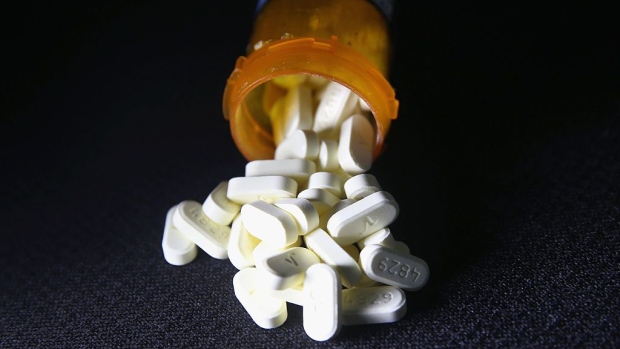Mar 22, 2023
Spiked Drug Tests Are Undermining Opioid Treatment Efforts
, Bloomberg News

(Bloomberg) -- Some patients addicted to opioids may be spiking their drug tests to mimic adherence to their treatment plans, undermining attempts to address an epidemic that looms larger than ever.
About 8% of opioid patients could be spiking their urine samples with buprenorphine, a drug used to treat pain and opioid addiction, according to a JAMA Psychiatry study published Wednesday. Adding buprenorphine tablets or residue directly into urine can create the impression that patients have taken their medication when they haven’t.
About 2.4 million adults are prescribed buprenorphine, a synthetic opioid, to address opioid use disorder, according to the report. In treatment, it substitutes for stronger opioids like heroin to prevent withdrawals. The end goal is for patients to then taper off use of buprenorphine as well. Discovering that some patients are undermining the treatment should be a red flag for clinicians, according to Jarratt Pytell, an assistant professor at the University of Colorado School of Medicine and co-author of the study.
“It’s not a time for a clinician to get upset or mad or kick someone out of treatment,” Pytell said. “This is a clinically important finding that means the treatment needs to be adjusted to meet the patient’s needs.”
Clinicians should work with patients who may be spiking to understand their motivations, so they can design a treatment plan that addresses underlying factors the patients may be dealing with. For instance, people who lack housing can find it difficult to manage their medications. Others may not be ready to abstain from stronger opioids and need more intense care.
Spiking the tests is a strategy for coping with opioid use disorder, Pytell said, and it’s “hard to undo many years of a disorder in a short period of time.”
The opioid crisis has become a public health emergency, as the drugs have become the biggest driver of overdose deaths. Opioids — primarily synthetic opioids like fentanyl — have led to more than 80,000 overdose deaths in 2021, according to the Centers for Disease Control and Prevention.
Urine tests that indicated possible spiking were more likely to contain other opioids, according to the report based on Millennium Health’s national database of over 507,000 urine samples from nearly 60,000 patients. It also found that potential add-ins of buprenorphine were more likely in primary care settings, where urine drug testing may not be monitored, and that patients who may be spiking their samples do so repeatedly.
(Corrects spelling of Millennium Health in last paragraph.)
©2023 Bloomberg L.P.


